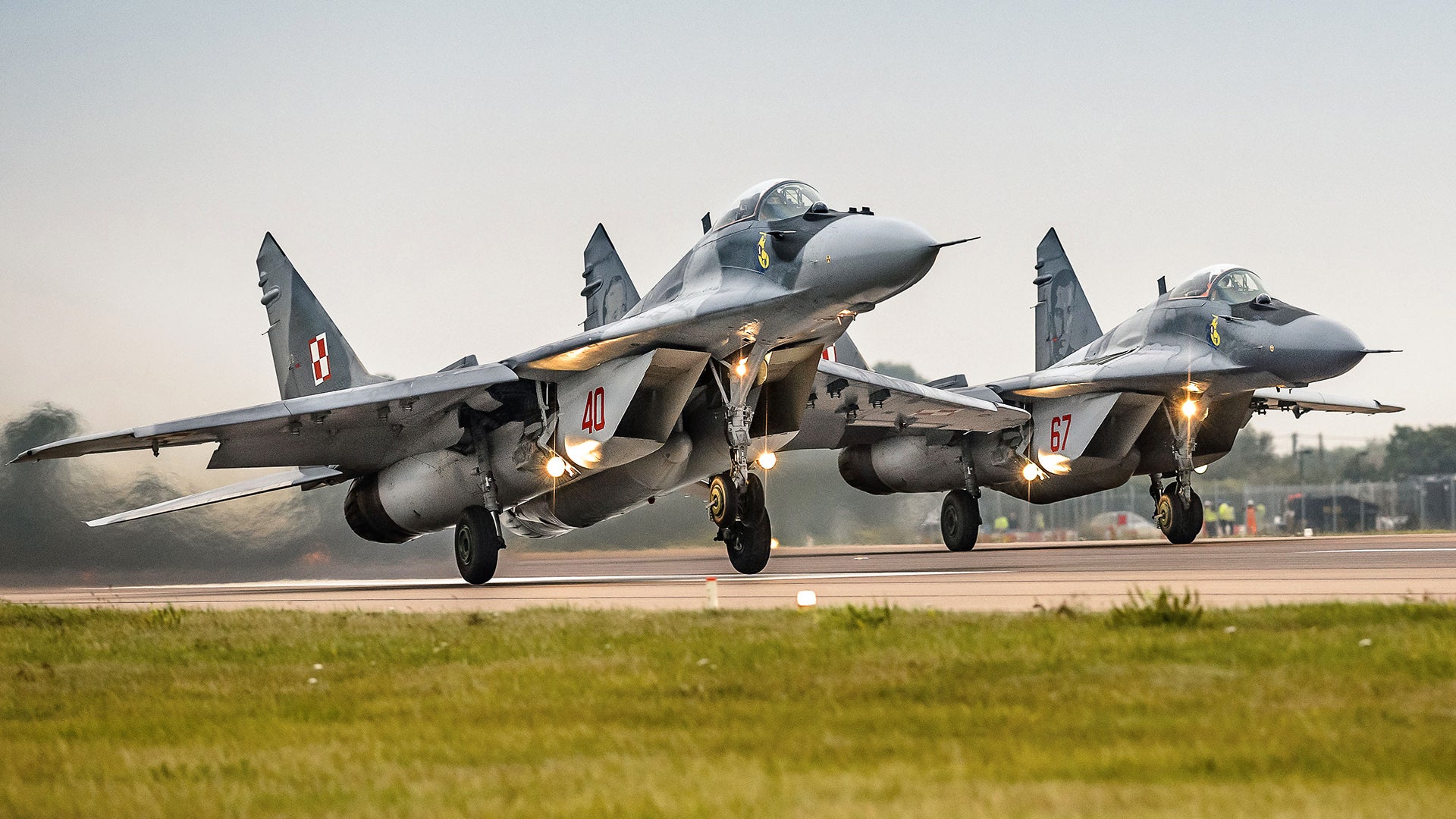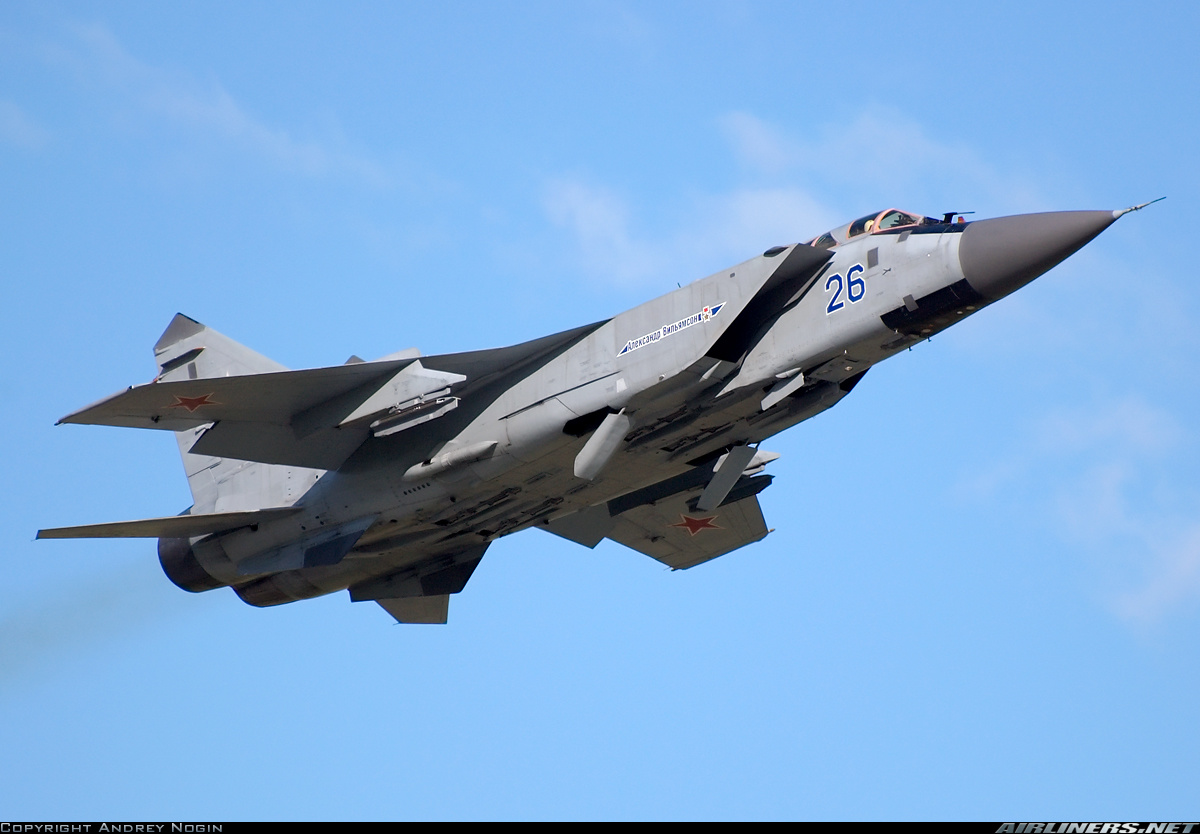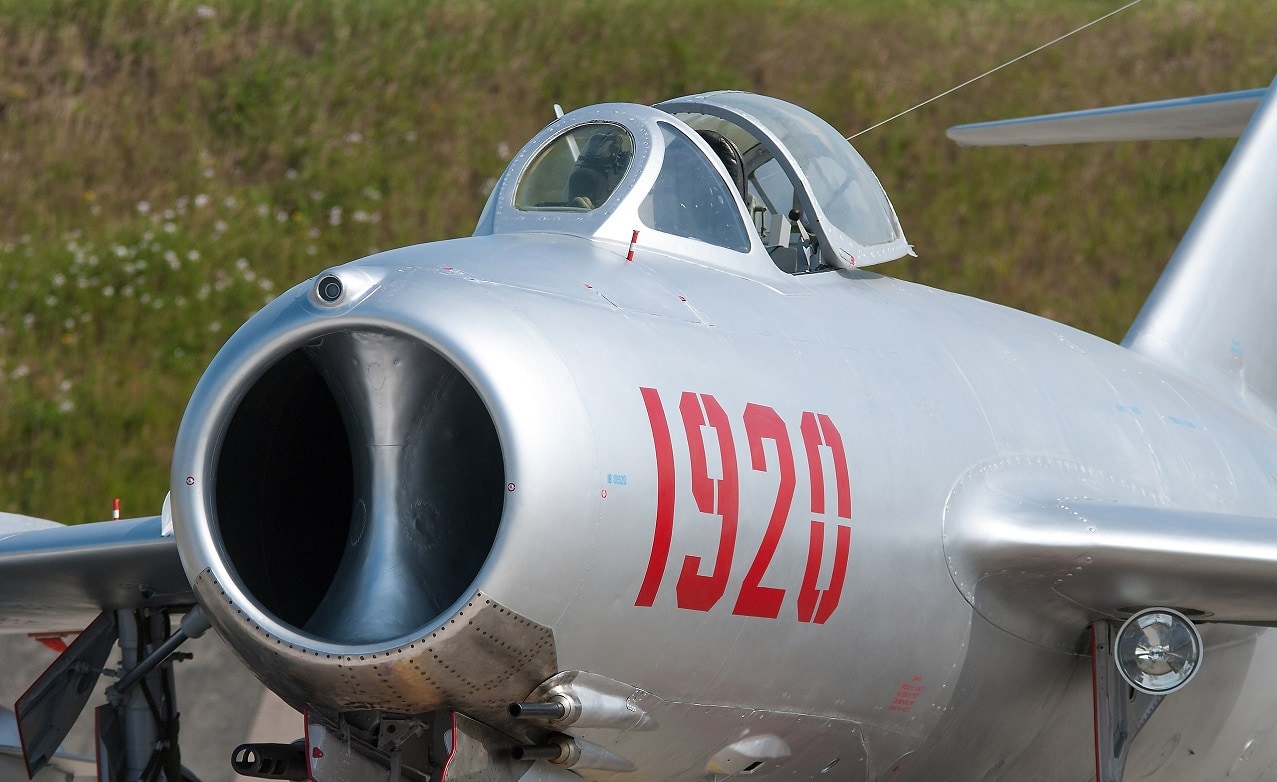Mig Aircraft Meaning - Although we strive to follow the rules of citation style, some inconsistencies may occur. If you have questions, please refer to the appropriate style guide or other resources.
MiG is any member of a family of Soviet military fighter aircraft produced by the design bureau founded in 1939 by Artem Mikoyan (M) and Mikhail Gurevich (G). (
Mig Aircraft Meaning

The first MiGs were propeller-driven fighters produced in moderate quantities during World War II. The MiG-9, which first flew in 1946, was more than just a piston-engine aircraft that used jet propulsion. but the MiG-15, derived from German war research and powered by a Rolls-Royce engine built with wingtips, was the best of the early jet fighters. This single-seat, single-engine aircraft first flew in 1947 and saw extensive combat in the Korean War. An improved version, the MiG-17, which first flew in 1950, shared its mobility and was used by North Vietnam in the Vietnam War in the 1960s as a defensive interceptor, and by Egypt and Syria as a bomber in the Arab-Israeli War. The twin engines made the MiG-19, which first flew in 1953, the first European-made supersonic fighter, but it was overtaken in 1955 by the MiG-21, a light single-engine interceptor that could fly at twice the speed. sound The basic version, in service in 1958, was a simple, inexpensive day fighter that was highly maneuverable, easy to maintain, and could operate at untested airfields. It became the main high-altitude interceptor used by North Vietnam, and improved versions remained the mainstay of Arab air forces until the 1970s.
The Story Behind Ukraine's 'new' Mig 29 Fighter Jets
The MiG-23, which entered service in 1972, had a variable wing to improve performance at different speeds and altitudes. It also included electronic sensors and increasingly sophisticated warning systems that allowed individual MiG fighters to locate and attack aircraft and prevent ground-based radars from returning. A land attack version of the MiG-23 with an armed MiG-23 cockpit and multiple weapons bays was called the MiG-27. The MiG-25 was developed around 1960 in response to American experiments with high-altitude supersonic bombers. Introduced in 1970, this twin-engine interceptor was the fastest fighter in active service, reaching speeds of Mach 2.7 and 2.8, with an operational ceiling of 24,400 m (80,000 ft). These abilities also made it useful for reconnaissance. The MiG-31, a two-seat interceptor introduced in 1983, is based on the MiG-25 but modified for lower speed and better low-speed performance. First operational in 1985, the MiG-29 is a single-seat, twin-engine air-to-air fighter that can also be used for surface attack.
Except for the MiG-23 and MiG-25, most MiG variants were produced outside the Soviet Union in countries such as China, Poland, Czechoslovakia and India. Mikoyan-Gurevich MiG-21 (Russian: Микоян и Гуревич МиГ-21); NATO reporting name: Fish) is a supersonic jet fighter and interceptor aircraft designed by the Mikoyan-Gurevich design bureau in the Soviet Union. It was nicknamed the "balalaika" because it is similar in design to the stringed instrument of the same name; "Ołówek", Polish for "pcil", due to the shape of the hull,
Nearly 60 countries on four continents have flown the MiG-21, and six decades after its first flight, it is still serving many countries. It set aviation records as the most produced supersonic aircraft in aviation history, the most produced fighter aircraft since the Korean War, and the longest production run of any fighter aircraft (currently surpassed by the McDonnell Douglas F-15). Eagle and Heraldic Dynamics F-16 Fighter Falcon).
The MiG-21 jet fighter was the successor to the Soviet jet fighters, the subsonic MS-15 and MiG-17 and the supersonic MiG-19. Some of the experimental Soviet Mach 2 designs were based on nose pods with tail fins, like the Sukhoi Su-7, or delta wing tails, with the MiG-21 being the most successful.
The Story Of The Soviet Pilot Who Defected To Japan With A Secretive Mig 25 Foxbat
Development of what would become the MiG-21 began in the early 1950s, when the Mikoyan OKB completed the preliminary design of the Ye-1 prototype in 1954. the redesign resulted in a second prototype, the Ye-2. This and other early prototypes had swept wings. The first prototype with delta wings to be found in production versions was the Ye-4. It made its first service flight on June 16, 1955 and July 1956 on Soviet Aviation Day at Moscow's Tushino Airport.
In the West, due to the lack of available information, the first details of the MiG-21 were confused with the same Soviet fighters. In one instance, Jane's Worldwide Aircraft 1960–1961 listed "Fish" as a Sukhoi model and used an illustration of the "Fish" Su-9.
The MiG-21 was the first successful Soviet aircraft to combine fighter and interceptor capabilities in one aircraft. They were light fighters that reached Mach 2 with a turbojet engine of relatively low power and were thus comparable to the American Lockheed F-104 Starfighter and Northrop F-5 Freedom Fighter and the French Dassault Mirage III.

Its basic layout was used for many other Soviet models; delta-wing aircraft included the Su-9 interceptor from Mi-biro and the E-150 rapid prototype, the successful mass-produced Su-7 frontal fighter and Mikoyan's experimental I-75 interceptor combined a similar wing shape. However, the distinctive damper cone and front air intake layout was not widespread outside the USSR and ultimately proved to be of limited potential due to the lack of space for the rotor.
Pentagon Says Poland's Jet Offer For Ukraine 'not Tenable'
Like many aircraft designed as interceptors, the MiG-21 had a short range. This was exacerbated by the poor positioning of the internal anti-gravity fuel tanks. As internal fuel is used up, thrust will lag behind acceptable parameters. This caused the aircraft to become statically unstable, making it difficult to control, resulting in 45 minutes of downtime. This can be approximated by gravity by carrying fuel in external tanks. The Chinese versions slightly improved the internal fuel tank layout (as did the second generation Soviet versions) and had larger fuel tanks to avoid this problem.
Additionally, when more than half of the fuel is used, throttle maneuvers prevent fuel from flowing into the engine.
, which resulted in a closure during the flight. This increased the risk of refueling (MiG-21 tanks were pressurized with air from a demon compressor), a problem inherited by the MiG-15, MiG-17 and MiG-19.
The short endurance and low fuel capacity of the MiG-21F, PF, PFM, S/SM and M/MF variants – although each had a slightly larger fuel capacity than its predecessor – led to the development of the MT and SMT variants. These increased range by 255 km (155 mi) over the MiG-21SM, but at the cost of degrading other capabilities such as a lower performance ceiling and slower time at altitude.
Ivan Mikoyan, Co Designer Of The Iconic Mig 29 Fulcrum Fighter Jet, Has Passed Away
The delta wing, while excellent for a fast-climbing interceptor, resulted in a loss of speed in any form of combat. However, loading light aircraft with a rate of climb of 235 m/s (46,250 ft/min) is possible with the MiG-21bis,
Not far off the performance of the later F-16A. The Tumansky R-25 MiG-21 jet engine specification added a second fuel pump during the afterburner stage. Activation of CR (ed. ) at altitude. The engine RPM will increase by 2.5% and the compression ratio will increase as the exhaust temperature rises. The activation limit is 2 minutes for both training and combat, as continued use causes the gin to overheat. Fuel consumption increased by 50% above full burn rate. Using this transient power gave the MiG-21bis a slightly better than 1:1 weight ratio and a rate of climb of 254 meters/second, close to the rated performance of the F-16. The use of WEP thrust was limited to 2 minutes to reduce stress during the 750 (250 + 250 + 250) flight hours, as each second of superburner operation counts as a few minutes of regular operation due to extreme heat stress. When the WEP was engaged, the R-25 engine of the MiG-21bis emitted a large jet 10-12 meters long - with six or seven bright rhomboid "shock diamonds". The Russians called the emergency powers the "diamond regime", which was never used in India.
Provide an experienced pilot and capable missiles that can hold their own against modern fighters. Its G-limits have increased from +7Gs in the early versions to +8.5Gs in the latest versions.

It was replaced by the new MiG-23 and MiG-27 with variable geometry. However, before the MiG-29, the Soviet Union eventually replaced the MiG-21
Mikoyan Gurevich Mig 21f 13 Fishbed C
Aircraft mig 21, mig 35 aircraft, mig 29 aircraft, mig military aircraft, mig 15 aircraft, mig 23 aircraft, mig 27 aircraft, mig 50 aircraft, mig aircraft, mig aircraft for sale, mig series aircraft, mig 31 aircraft
0 Comments